Having a dishwasher that won’t drain can be extremely frustrating. Not only is it inconvenient and messy, but it’s also potentially hazardous if the water overflows onto the floor or lingers in your sink. If you own a Whirlpool dishwasher and are experiencing this issue, don’t worry – there are some simple steps you can take to diagnose and fix the problem. In this article, we’ll walk you through how to troubleshoot why your Whirlpool dishwasher isn’t draining properly and what you can do to get it back up and running again.
Reasons Why Whirlpool Dishwasher Not Draining And Fixing
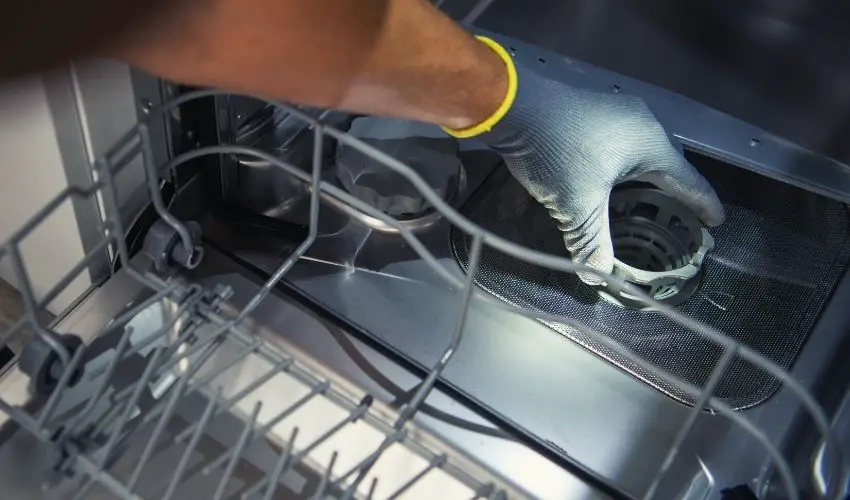
Let’s take a closer look at why a Whirlpool dishwasher can’t drain.
Incomplete Wash Cycle
Struggling with a Whirlpool dishwasher that won’t drain properly? Most likely, the wash cycle wasn’t finished. When a dishwasher is running through its cycles, water will fill the bottom of the tub and then begin to drain at certain intervals. If something disrupts this process (like a power outage or unbalanced load), the entire cycle may not be completed and the leftover water will remain in the dishwasher. To fix this issue, simply restart the cycle and make sure all dishes are evenly distributed inside.
Drain Is Clogged
A clogged drain is one of the most prevalent reasons for a dishwasher not draining properly. To fix a Whirlpool dishwasher that is not draining correctly, you must start by inspecting the drain. A clog can be caused by anything from food particles, grease and soap residue to small objects that have worked their way into the drainage system. To ensure your dishwasher is functioning properly and draining correctly, you’ll need to unclog the drain line if it’s blocked.
Drain Hose Is Kinked

If the dishwasher is not draining, one of the first troubleshooting steps should be to check if there is a blockage in the drain hose. If the drain hose of your dishwasher is bent or crammed with food particles, it will hinder the proper draining of water. To inspect the drain hose, unplug the dishwasher and disconnect it from the kitchen sink drain. Check that the hose is not kinked or pinched and clear away any debris from the hose. If there is a clog, use a wet/dry vacuum to remove it. Afterward, reconnect the hose and plug in the dishwasher.
Drain Hose Is Clogged
One of the main causes of a dishwasher not draining is a clogged drain hose. The drain hose is responsible for transporting wastewater out of the dishwasher and into the sink or garbage disposal. If this hose becomes blocked, it can prevent drainage from occurring. Checking whether your drain hose is clogged is relatively straightforward—simply disconnect the hose from the dishwasher and inspect it for any blockages. If there are any, you can remove them with a wire hanger or a plumber’s snake. Alternatively, you can replace the drain hose if necessary.
Garbage Disposal Incorrectly Installed
In certain situations, an improper installation of the garbage disposal can lead to water buildup and flooding inside the dishwasher. To determine if this is the root of the issue, detach the drain hose from its connection with the sink’s tailpiece. Then run a test cycle and observe what happens when the dishwasher is draining. If you find that water is flowing out of the drain hose and not into the tailpiece, this could be indicative of a garbage disposal installation issue. In this case, you will need to consult with an experienced plumber in order to adjust or replace the garbage disposal so it functions properly. This is important to do as soon as possible in order to avoid water damage and further issues.
Stuck Check Valve
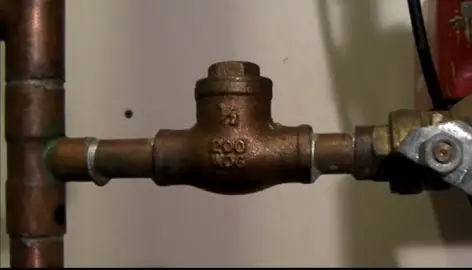
If the dishwasher is not draining, the check valve may be stuck in the open position. This prevents water from exiting the dishwasher and can cause it to overflow or clog up with food debris. To fix this, start by disconnecting power to the appliance and unplugging its connection hose. Unscrew any clips holding the hose in place, and remove it carefully. Inspect the check valve for any debris or food buildup that could be preventing it from closing properly. Use a toothbrush to clean away any dirt or grime, then reattach the hose and turn on the power again. If this doesn’t solve the problem, you may need to replace the check valve entirely.
Failed Drain Pump
If your dishwasher will not drain, the first thing to check is whether the drain pump has failed. The drain pump helps to expel water from the appliance. When your dishwasher is blocked or not working correctly, it won’t be able to efficiently expel the water. You can check the drain pump for debris buildup or other signs of damage and replace it if necessary. Sometimes, just cleaning the drain pump can fix the issue. [1]
Whirlpool Dishwasher Filter Is Clogged
Whirlpool dishwashers are notorious for clogged filters, an issue that plagues many owners. A blocked filter can stop water from flowing smoothly, leaving your dishes and glassware covered in soapy residue. Fortunately, this problem is easy to fix by cleaning the filter.
Steps To Clean A Whirlpool Dishwasher Filter And Improve Draining
- Unplug the dishwasher from the main power source and remove all dishes, racks, and utensils.
- To gain access to the filter area of your Whirlpool dishwasher, simply locate and detach the lower access panel. You can find this panel by looking underneath the door of your dishwasher.
- With a pair of protective gloves, remove the filter by gently pulling it straight out.
- Rinse the filter in hot water to clear away any food particles that are stuck in the screen.
- To completely rid the filter of dirt and debris, use either an old toothbrush or your fingers to delicately scrub around its edges.
- Once you are satisfied that the filter is sufficiently cleaned, put it back in its place and reattach the panel.
- Plug your dishwasher back into the power source and turn it on to ensure proper drainage.
If your Whirlpool dishwasher is still not draining, try cleaning out the drain hose to see if that solves the issue. The drain hose is typically located underneath the sink and can be easily removed using a pair of pliers. To ensure efficient draining, make sure to remove all food scraps and other debris from the item before replacing it in its original spot.
You may also need to check the float switch, which is a device that monitors the level of water in the dishwasher. If it is stuck in the “on” position, it can prevent your Whirlpool dishwasher from draining properly. To reset the float switch, turn off the power to the appliance and then press and hold down the button for 10 seconds before releasing it.
If you’ve tried all of the above solutions and still haven’t resolved your Whirlpool dishwasher malfunction, it may be time to enlist a professional repair service. [2]
How To Prevent Dishwasher Clogs
To avoid clogs in your dishwasher, it is essential to make sure that dishes are loaded correctly and pre-washed before loading them into the machine. Large items should not be loaded directly in the dishwasher, but rather broken down into smaller parts that will fit more easily.
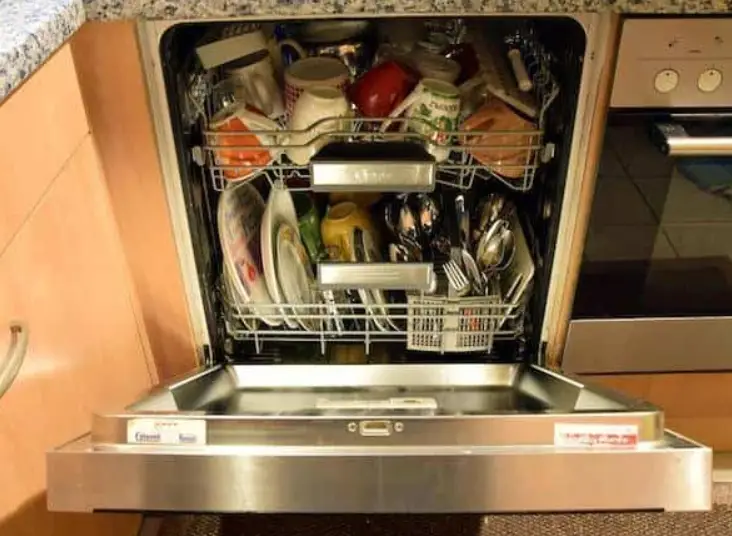
Be sure to clean out any food particles or residue from your dishes before loading them into the dishwasher. This can help to avoid food particles getting stuck in your dishwasher filter and cause clogs.
It is also a good idea to regularly check the condition of your dishwasher filter, as this can be a common cause of clogged drains. The filter should be emptied out every few months and replaced when necessary. [3]
Tips To Fixing Whirlpool Dishwasher Not Draining
Check the drain hose for any clogs or blockages. Make sure it is not kinked, bent, or otherwise obstructed. If a problem is found here, clear away the obstruction and check if water drains normally again.
Ensure that the dishwasher’s filter screen is clean of debris. A dirty filter can reduce water flow and prevent the dishwasher from draining properly.
Take a peek at the drain pump and ensure it is running properly. If not, you may need to replace it or contact an expert for further inspection.
Ensure that the drain hose is attached firmly and properly to the sink’s plumbing for optimal functioning. If the connection is loose, the dishwasher may not be able to properly drain.
Inspect the door gasket for any cracks or breaks that could be causing a leak and preventing proper drainage.
Make sure that all of the connections in the dishwasher’s plumbing system are tight and secure, including those connected to the motor, sump pump, and water inlet valve.
Check for any debris or food particles that could be stuck in the dishwasher’s drain tube or impeller blade.
Clean away any blockages to allow for proper drainage.
To ensure that your dishwasher is functioning properly, make sure you level it and avoid any incline or decline. This can prevent proper drainage and should be corrected if necessary. [4]
FAQ
How do you fix a dishwasher that won’t drain completely?
- Check the drain hose for clogs or kinks.
- Make sure the air gap, if present, is clear.
- Locate the drain valve, which is usually found near the bottom of your dishwasher, and give it a thorough inspection.
Check the pump and motor assembly for any obstructions or damage.
Make sure the drain impeller, located within the pump and motor assembly, is not damaged or clogged.
Why is there standing water in the bottom of my dishwasher?
If you notice a pool of water left in your dishwasher after the cycle has finished, it is likely one of the most frequent issues faced with this home appliance. The cause could be any one of a few issues, and the solution depends on what’s causing it. The first thing to check is whether the drain hose or air gap is clogged. If it is, the water will be unable to escape the dishwasher. If this isn’t the problem, then you might have an issue with the drain pump or motor.

How do you unclog a pump on a Whirlpool dishwasher?
The first step in unclogging a pump on a Whirlpool dishwasher is to open the bottom access panel. Usually, there will be a small access panel located below the dishwasher, which is held in place with either screws or clips. Upon opening the panel, you should be able to easily spot the drain pump located close to the bottom of your dishwasher. Using a screwdriver, remove the mounting screws that hold the pump in place. Once the screws have been removed, you can then slide the pump off of its mounting bracket. Next, you will need to locate the clog. Often, this can be found near the bottom of the pump or in the drain hose. Remove the clog by either using a vacuum or pliers. Once the clog is removed, replace the mounting screws and reattach the pump to its bracket. Finally, securely close the access panel and initiate a cycle to ensure that your dishwasher is correctly draining. If the dishwasher persists in draining inadequately, it may be necessary to contact an expert and assess whether or not there are any serious blockage issues.
How do you reset a dishwasher drain?
Modern dishwashers are equipped with a reset switch, which can be used to clear out any clogged pathways and restore the dishwasher’s draining capabilities. To reset the dishwasher drain, locate the reset switch on the control board and press it for a few seconds. In some cases, you may need to press it for up to 10 seconds. Once the reset is complete, you should see a light on the control board indicating that the dishwasher drain is now reset. If the light fails to illuminate, you might have to refer to your user guide on how best to reset the dishwasher drain. Once the reset is complete and the light is on, you can now test if it worked by running a cycle with a full load of dishes. If the dishwasher drains properly, then the reset was successful; if it doesn’t, you may need to try a different reset technique. One more thing to consider is that regular maintenance and cleaning of the dishwasher drain can help prevent clogging and ensure optimal performance. To clean the dishwasher drain, you can use a combination of vinegar and baking soda to break down any residue.
Where is the drain valve in the Whirlpool dishwasher?
The drain valve in the Whirlpool dishwasher is located at the bottom of the tub, near the floor. It is a small valve that is usually white and has a round handle. This valve needs to be opened in order for the dishwasher to drain properly. If it is not opened, the water will not drain and your dishes won’t be cleaned properly.
How do I reset my Whirlpool dishwasher?
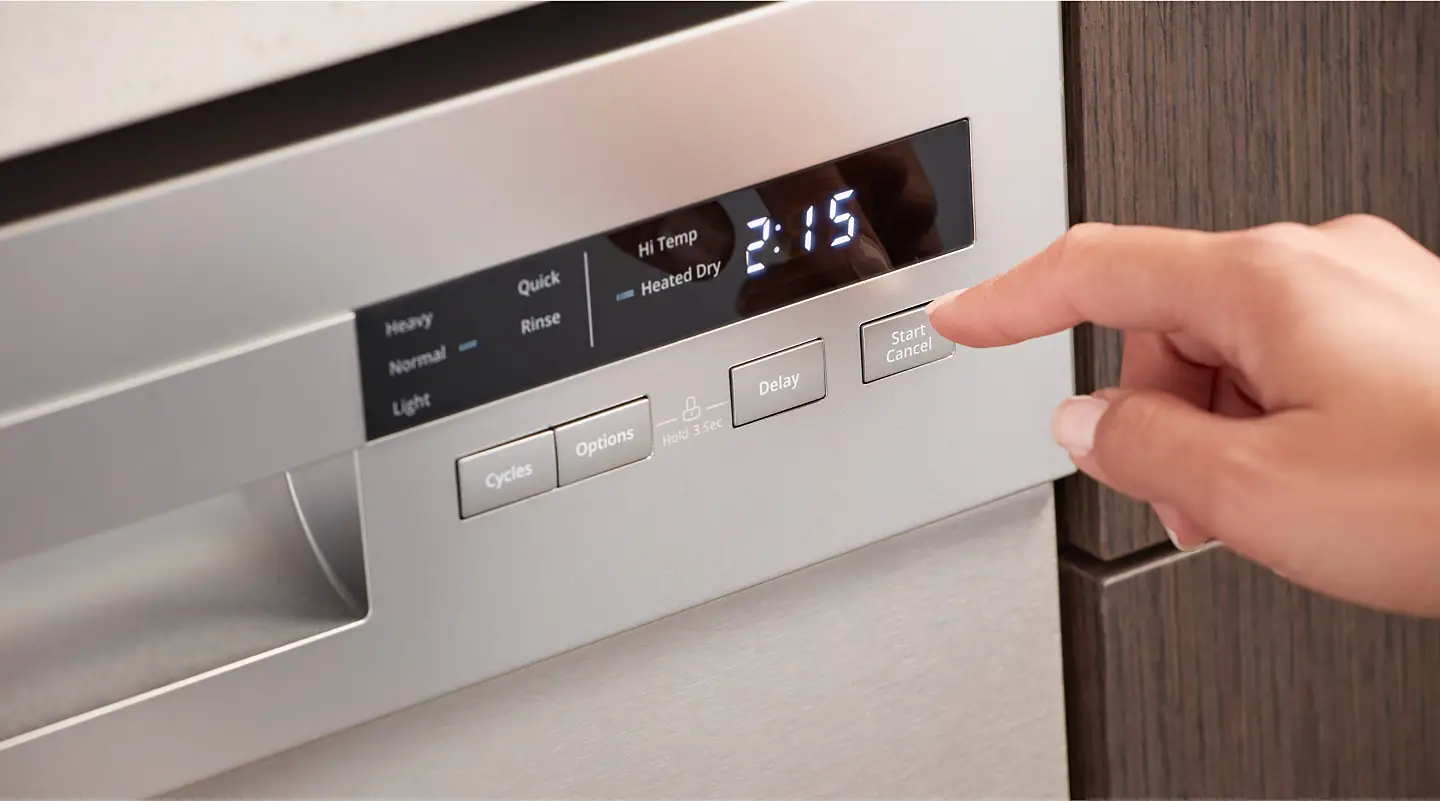
If your Whirlpool dishwasher has suddenly stopped draining, try resetting it for a quick and effective solution. Resetting the dishwasher will help restore its operation and ensure it is draining properly. To reset your Whirlpool dishwasher, follow these steps:
- Unplug the machine from the power source.
- Press the “Cancel/Drain” button and hold it for five seconds to reset the dishwasher’s cycle.
- Plug the machine back into the power source and turn it on.
- Select “Normal Wash” to begin a cycle.
During the cycle, the dishwasher should drain properly. In the event that your washer isn’t draining, you may need to examine both your drain hose for clogs and also inspect the impeller of the pump for any debris. If your dishwasher is still failing to effectively drain, it’s possible you need to replace some of its components. You can find replacement parts at your local appliance store or online.
How do I manually drain water from my dishwasher?
If your dishwasher is displaying signs of a backed-up drain, then consider manually draining the water to resolve the issue. Depending on your model of dishwasher, this process can vary.
- First, locate the dishwasher drain hose, which should be at the bottom of your dishwasher.
- Next, disconnect the dishwasher hose from its connection to the garbage disposal or drain pipe.
- Finally, place a bucket under the hose and use a screwdriver or pliers to disconnect the hose clamp.
This will allow the remaining water in your dishwasher to drain into the bucket. Once the water has been fully drained, attach your hose back up and carry out a brief cycle to guarantee that your dishwasher is draining well.
How do I know if my dishwasher drain pump is not working?
If your dishwasher is not draining properly, it may be an issue with the drain pump. To ensure the drain pump of your dishwasher is functioning correctly, listen for the motor running when it’s in its draining phase. Inability to hear a noise may suggest that the drain pump is malfunctioning. Additionally, if your dishwasher does not completely empty out after a cycle, it may also be an issue with the drain pump.
Useful Video: Whirlpool Dishwasher Repair – How to replace the Door Gasket – Gray
Conclusion
By following the steps above, you should be able to fix the issue of your Whirlpool dishwasher not draining. If none of these methods works, it may be a sign that you need to replace some parts or the entire dishwasher. In this case, it is best to consult a professional for help. If you have any questions or concerns, be sure to contact your local appliance repair shop right away. With the right tools and knowledge, you can ensure that your dishwasher is back up and running in no time.
References
- https://www.ifixit.com/Wiki/Whirlpool_Dishwasher_Not_Draining
- https://midamericaappliancerepair.com/blog/whirlpool-dishwasher-not-draining/
- https://www.whirlpool.com/blog/kitchen/how-to-fix-a-clogged-dishwasher.html
- https://removeandreplace.com/2021/12/20/6-ways-to-fix-whirlpool-dishwasher-that-will-not-drain/










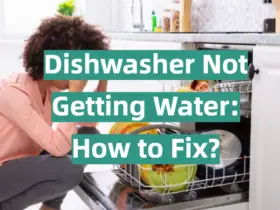
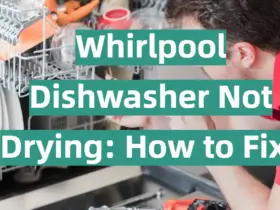
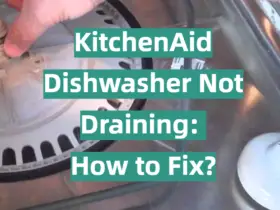
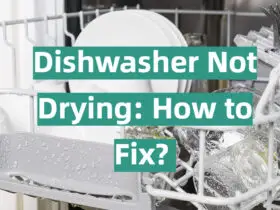
Leave a Reply